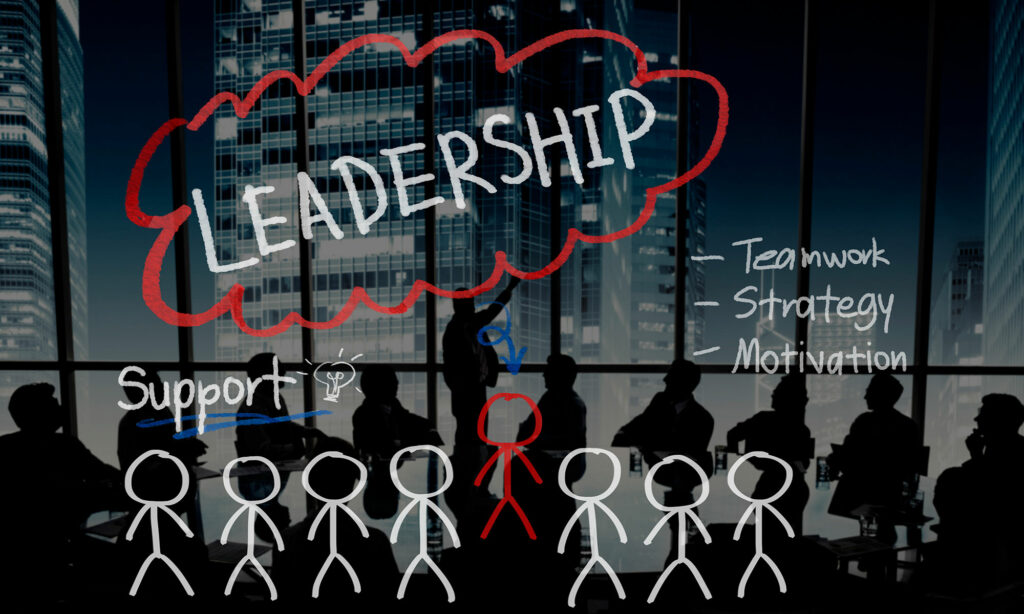Training programs are crucial for the growth and development of individuals and organizations. However, it can be challenging to determine the most effective strategies for achieving success.

One way to learn from successful training programs is through case studies. Case studies provide real-world examples of how training programs have positively impacted individuals or organizations.

We can identify effective strategies and adapt them to different contexts by examining these cases. In this article, we will explore the importance of case studies in showcasing successful training programs and provide guidance on how to learn from them.
Real-World Case Studies
1. Coca-Cola:
Coca-Cola partnered with Coursera to provide free online learning to employees worldwide, resulting in more than 25,000-course completions in just six months. The program helped improve employee skills and led to a more engaged and productive workforce.
In 2020, Coca-Cola announced a partnership with Coursera, a leading online learning platform, to offer free online courses to its employees worldwide. The initiative was designed to enhance employee skills and support ongoing learning and development within the organization.
Employees had access to more than 3,000 courses on a variety of topics, including business, technology, and data science. Coca-Cola’s employees were able to develop new skills, earn certifications, and further their education, all while working remotely during the pandemic.
The partnership with Coursera provided Coca-Cola employees with a flexible and accessible way to learn new skills and advance their careers. The online platform offered a variety of courses at different levels, making it easy for employees to find courses that suited their needs and interests.
Through this program, Coca-Cola was able to improve employee engagement and productivity by investing in their skills and development. Employees who completed courses reported feeling more confident and equipped to tackle their job responsibilities. They also appreciated the opportunity to learn and grow within the organization.
Coca-Cola’s partnership with Coursera demonstrates the benefits of investing in employee learning and development. By providing employees with access to quality education and training, companies can improve employee engagement, productivity, and overall performance.

This program serves as a prime example of how organizations can leverage technology and online learning platforms to promote ongoing learning and development among their workforce.
2. Procter & Gamble:
P&G implemented a personalized training program for their sales team, which resulted in a 13% increase in sales and a 20% increase in customer satisfaction. The program included virtual simulations, coaching, and on-the-job learning.
Procter & Gamble (P&G) is a multinational consumer goods company that employs more than 95,000 people worldwide. The program included a mix of virtual simulations, coaching, and on-the-job learning. The sales team was also given access to personalized learning materials based on their individual needs and performance goals. The program aimed to provide a more personalized learning experience for each salesperson, which would ultimately lead to improved performance and increased customer satisfaction.
The personalized approach to training allowed the sales team to improve their skills in areas that needed the most improvement, resulting in better performance and higher customer satisfaction.

Virtual simulations were used to help the sales team practice and improve their selling techniques in a safe and controlled environment. Coaching sessions were conducted with experienced sales managers who provided feedback and guidance on specific sales opportunities.
On-the-job learning was also emphasized, with the sales team given opportunities to apply their newly acquired skills in real-world situations. The success of the program was attributed to its personalized approach and emphasis on practical learning. By providing each salesperson with tailored learning materials and opportunities to practice their skills, P&G was able to improve the overall performance of their sales team and increase customer satisfaction.
3. Ericsson:
Ericsson implemented a global leadership program that focused on developing the company’s top 500 leaders.

The program included workshops, coaching, and experiential learning, resulting in improved leadership capabilities and increased employee engagement. Ericsson, a multinational telecommunications company, recognized the need to develop its top 500 leaders globally to ensure the company’s continued success.
The program’s primary objective was to enhance the leaders’ capabilities to lead Ericsson through the changing telecommunications landscape. The program’s curriculum was designed to reflect Ericsson’s business priorities, and each leader received personalized coaching to help them apply their learning to their specific role.
After completing the program, Ericsson’s leaders reported increased confidence and a better understanding of their roles’ strategic priorities. They also reported improved communication and collaboration skills, leading to increased employee engagement and motivation.
The program’s success was reflected in Ericsson’s performance, with the company reporting a rise in revenue and increased market share. The program’s participants were also more likely to be promoted within the organization, leading to a more sustainable leadership pipeline for the company’s future.
4. Teach for America:
Teach for America provides intensive training to new teachers in underprivileged schools. The program has led to increased teacher retention, improved student achievement, and a more diverse teacher workforce.
Teach for America (TFA) is a non-profit organization that provides training to recent college graduates and professionals to teach in underprivileged schools across the United States. The organization believes in the power of education to bring about social change and aims to address the achievement gap in the country’s education system. TFA’s training program focuses on developing teaching skills, cultural competency, and leadership qualities in their corps members.

The program includes a five-week intensive training period, during which corps members receive a crash course in pedagogy, classroom management, and lesson planning. The training also includes seminars on cultural competency and discussions on the social issues facing the communities in which they will be teaching.
After completing the training, corps members are placed in schools in low-income areas and provided with ongoing coaching and support.
The program has been successful in improving teacher retention rates and student achievement. According to a 2018 study by Mathematica, TFA teachers were more likely to remain in the teaching profession for at least three years than non-TFA teachers. Furthermore, a 2015 study by the Urban Institute found that TFA teachers were as effective as or more effective than their peers in improving student outcomes, including test scores and graduation rates. The program has also contributed to a more diverse teacher workforce.
TFA actively recruits and selects corps members from a wide range of backgrounds, including those who are traditionally underrepresented in the teaching profession. As a result, TFA teachers are more likely to be people of color, come from low-income backgrounds, and have experience working in diverse communities.
In conclusion, Teach for America’s training program has been successful in improving teacher retention rates, student achievement, and diversity in the teaching profession. The organization’s commitment to developing teaching skills, cultural competency, and leadership qualities has led to positive outcomes for both corps members and the students they serve.
5. Absa Bank:
Absa Bank is a leading financial services provider in South Africa that has been serving its customers for over 150 years. In order to stay competitive and provide quality services to its customers, Absa Bank has always invested in its employees’ training and development. In 2018, Absa Bank launched a digital learning program to provide its employees with access to over 5,000 courses. The program resulted in improved employee skills and a 20% reduction in training costs.

The digital learning program was designed to provide a more flexible and cost-effective way for employees to learn and develop new skills. The program was accessible online, allowing employees to access training materials at any time, from any location.
The program covered a wide range of topics, including banking and finance, customer service, leadership and management, and digital skills.
Employees who completed the program reported feeling more confident and competent in their jobs, which led to a more productive and engaged workforce.

The program also helped Absa Bank to identify skill gaps and training needs, which allowed the company to develop targeted training programs to address these gaps.
Overall, the digital learning program has been a great success for Absa Bank. It has helped to improve employee skills, reduce training costs, and create a more engaged and productive workforce. By investing in its employees’ training and development, Absa Bank has positioned itself as a leading financial services provider in South Africa, capable of meeting the needs of its customers in an ever-changing business landscape.
6. UNICEF:
UNICEF implemented a training program for their frontline workers in Nigeria, which focused on improving their communication and problem-solving skills. The program resulted in improved child health outcomes and increased community engagement.
The program, which was implemented in partnership with the Nigerian government, focused on building the capacity of workers to better engage with communities and provide effective solutions to child health issues.

The training program was designed with a combination of classroom and practical sessions, and participants were provided with ongoing support and feedback. The program aimed to improve the workers’ ability to communicate with parents and caregivers about child health issues, provide appropriate health information,
and address misconceptions and cultural beliefs that might impede child health outcomes.
The program significantly impacted child health outcomes in the communities where it was implemented. UNICEF reported a 15% reduction in the incidence of childhood illness and a 10% increase in the number of children receiving timely and appropriate health interventions. The program also led to increased community engagement and a more collaborative approach to child health issues.
The success of the program in Nigeria has led to its replication in other countries in Africa and beyond. UNICEF continues to work with governments and local partners to provide training and capacity-building programs that improve child health outcomes and promote community engagement.
7. Marriott:
Marriott implemented a training program for their hotel housekeeping staff, which included virtual reality simulations and on-the-job coaching. The program resulted in improved employee satisfaction and a 20% reduction in room turnaround time.
Marriott, a global hospitality company, recognized the importance of providing its housekeeping staff with efficient and effective training to improve the overall guest experience.

The program consisted of a three-day training course that included virtual reality simulations of various housekeeping tasks, followed by hands-on coaching from experienced supervisors. The virtual reality simulations allowed employees to practice cleaning techniques in a safe and controlled environment, while the on-the-job coaching provided real-time feedback and guidance.
Employees reported feeling more confident and skilled in their roles, leading to higher job satisfaction and a greater sense of pride in their work. The reduction in room turnaround time also led to a more efficient and streamlined housekeeping process, resulting in a better overall guest experience.
Marriott’s innovative approach to training its housekeeping staff showcases the value of incorporating technology and hands-on coaching into training programs. By providing employees with a more immersive and engaging learning experience, Marriott was able to improve both employee satisfaction and the guest experience.
8. USAID:
USAID, the United States Agency for International Development, is an organization that assists developing countries worldwide. They implemented a training program for local government officials in Uganda, which focused on improving their project management and communication skills. The program led to improved government efficiency and better public service delivery.

The training program designed by USAID focused on equipping local government officials in Uganda with the necessary skills to improve government efficiency and better public service delivery. The program consisted of a series of workshops and on-the-job training that covered various aspects of project management, including planning, implementation, monitoring, and evaluation. The training also emphasized effective communication skills that are crucial for project management.

To ensure that the training was effective, USAID collaborated with local partners to tailor the program to each region’s specific needs and challenges. The training sessions were also conducted in local languages to make them more accessible to participants.
The program had a significant impact on the participants and the communities they served. Local government officials who completed the training reported improved project management skills and better communication with colleagues and community members. This led to increased efficiency in government operations and better delivery of public services, such as healthcare and education.
The program also helped build stronger relationships between local government officials and community members. By improving communication and transparency, the program increased public trust in government officials and helped to foster more collaborative partnerships between the government and the communities they served.
USAID’s training program for local government officials in Uganda highlights the importance of effective project management and communication skills in improving government efficiency and public service delivery. By tailoring the program to the specific needs of each region and conducting training in local languages, USAID was able to impact the participants and their communities significantly. The success of the program shows the potential for training programs to create positive change in developing countries and serves as a model for future initiatives.
9. Nike:
Nike implemented a training program for their store managers, which included gamified learning and peer-to-peer coaching. The program resulted in improved employee engagement and a 10% increase in-store sales.

The training program was designed to provide store managers with the necessary skills to better engage with customers, coach their teams, and drive sales.
The program included gamified learning modules that allowed store managers to learn at their own pace while earning rewards and badges for completing tasks. The gamification approach helped to keep the store managers engaged and motivated throughout the program.
In addition to the gamified learning modules, Nike also implemented a peer-to-peer coaching program. The coaching program paired store managers with a peer coach who provided feedback and support throughout the training program. The peer-to-peer coaching program helped to reinforce the learning and ensure that the store managers were able to apply what they had learned on the job.
The program was a success, resulting in improved employee engagement and a 10% increase in-store sales. The store managers reported feeling more confident in their ability to coach their teams, engage with customers, and drive sales. The gamified learning modules were particularly well-received, with many store managers commenting that they enjoyed the interactive and engaging nature of the program.
10. Kenya Red Cross:
Kenya Red Cross implemented a training program for their volunteers on disaster management and first aid. The program resulted in improved response times and better coordination during disasters.
In Kenya, disasters such as floods, droughts, and conflicts are common occurrences that affect thousands of people each year. Kenya Red Cross, a humanitarian organization, recognized the need to improve the capacity of its volunteers to respond effectively to these disasters.

To address this need, Kenya Red Cross implemented a training program for their volunteers on disaster management and first aid. The program included training on various topics, such as basic life support, disaster preparedness, and response coordination.
The training program was conducted in various regions across Kenya and included both theoretical and practical components. Participants were trained by experienced trainers using interactive learning methods, such as role-playing and simulations, to reinforce their learning.
As a result of the training program, Kenya Red Cross volunteers were better equipped to respond to disasters promptly and effectively. The volunteers were able to coordinate their efforts better, resulting in improved response times and reduced loss of life and property.
In addition, the training program led to increased community awareness of disaster preparedness and the role of the Kenya Red Cross in disaster response. This helped to build trust and confidence in the organization, resulting in increased community engagement and support.
Key Strategies for Success
Here are some potential key strategies for success that could be highlighted:
1. Needs assessment: Conduct a thorough needs assessment to identify the specific knowledge, skills, and attitudes that need to be developed through the training program.
2. Experiential learning: Using real-life scenarios, simulations, and case studies to provide learners with hands-on experience and practical skills.
3. Personalized coaching: Providing learners with one-on-one coaching and feedback to help them improve their performance and achieve their goals.
4. Interactive training methods: Using interactive training methods, such as group discussions, role-playing, and games, to engage learners and facilitate knowledge retention.
5. Continuous reinforcement: Providing ongoing support and reinforcement through follow-up sessions, online resources, and mentoring to ensure that learners retain and apply what they have learned.
Measuring the Impact of Training Programs
Measuring the impact of training programs is crucial to ensure that the program is achieving its objectives and providing a positive return on investment. In this section, we will explore the importance of measuring the impact of training programs and provide guidance on how to do so effectively.

Firstly, it’s essential to define the objectives of the training program and identify the metrics that will be used to measure its impact. These metrics could include improved employee performance, increased productivity, higher customer satisfaction, or increased revenue. Once the metrics have been identified, it’s important to develop a plan for collecting and analyzing data.

Surveys and assessments are common methods used to collect data on the effectiveness of training programs. Surveys can be used to gather feedback from participants on the quality of the training, while assessments can be used to evaluate the impact of the training on performance.
Performance metrics, such as sales figures, customer satisfaction ratings, or employee turnover rates, can also be used to measure the impact of training programs. By comparing these metrics before and after the training program, it’s possible to determine whether the program has had a positive impact on the organization.
In the case studies presented in this training program, success metrics were used to measure the impact of training programs. For example, the Women’s Enterprise Fund in Kenya measured the impact of its business training program by tracking the number of women who started their own businesses, increased their profits, and created new jobs.
Overall, measuring the impact of training programs is essential to ensure that they are achieving their objectives and providing a positive return on investment. By using surveys, assessments, and performance metrics, it’s possible to gather data on the effectiveness of the program and identify areas for improvement.
In conclusion, case studies are an effective tool for learning from successful training programs. By showcasing real-world examples, we can identify key strategies for success and measure the impact of training programs. This information can be used to design more effective training programs and improve outcomes for individuals and organizations. As training experts, we must continually strive for excellence in our programs and seek to learn from the successes of others. By doing so, we can help to build a stronger and more skilled workforce, and make a positive impact on the world around us.



